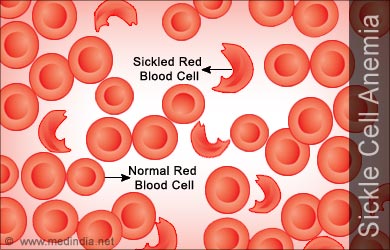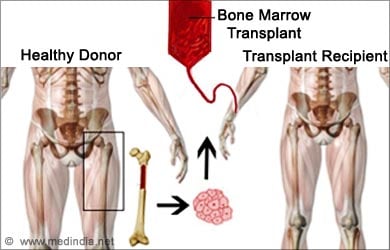About
Sickle cell anemia (SCA) is a genetic blood disorder caused by abnormal inherited hemoglobin.
Sickle cell anemia (SCA) is a genetic blood disorder caused by abnormal inherited hemoglobin. The abnormal hemoglobin causes distorted or sickle-shaped red blood cells i.e. the red blood cells are shaped like a crescent. It is the most common form of sickle cell disease (SCD). It is also known as Hemoglobin SS disease, Hemoglobin S disease, HbS disease or sickling disorder due to hemoglobin S.

The geographical distribution of the SCA gene directly co-relates with malaria-prone areas throughout the world. Sickle cell anemia is very common in people who have their origins in Africa, South or Central America (especially Panama), Caribbean islands, Mediterranean countries (such as Turkey, Greece, and Italy), India, and Saudi Arabia. It is estimated that in the United States, SCA affects 70,000–100,000 African Americans with the disease affecting 1 out of every 500 African American births. SCA also affects 1 out of every 36,000 Hispanic Americans at birth.
Normal RBCs are disc or concave shaped and closely resemble doughnuts minus the holes. Any change in its shape can cause problem with the blood flow dynamics.
In those with SCA, the hemoglobin sticks together and appears fiber-like, causing the RBCs to stiffen and become C-shaped, like a sickle in the presence of low oxygen levels. These sickled RBCs are extremely fragile and therefore rupture easily (medically called hemolysis) leading to low red blood cell (RBC) count and anemia symptoms. Besides, the sickle- celled RBC has a life span of only 10-20 days, in contrast to normal RBCs that have a lifespan of 110-120 days. The stiff, sickled RBCs clump together and tend to stick to the wall of the blood vessels. They are circulated with difficulty and can even cause blockage of blood vessels leading to infection, tissue and organ damage along with a great deal of pain.
Patients with sickle cell anemia may feel tired or weak. In addition, they might have shortness of breath, dizziness, headaches, or coldness in the hands and feet.
Early diagnosis through screening of newborns is necessary for effective management of sickle cell anemia.
It is not possible to cure sickle cell anemia. Hence, treatment is almost always focused on relieving the disease symptoms and preventing complications. Newer methods of treatment and better medications have made it possible for people with SCA to live up to their fourth decade and beyond. Researchers are further investigating new treatment options such as blood and marrow stem cell transplants, gene therapy and new medicines.

















